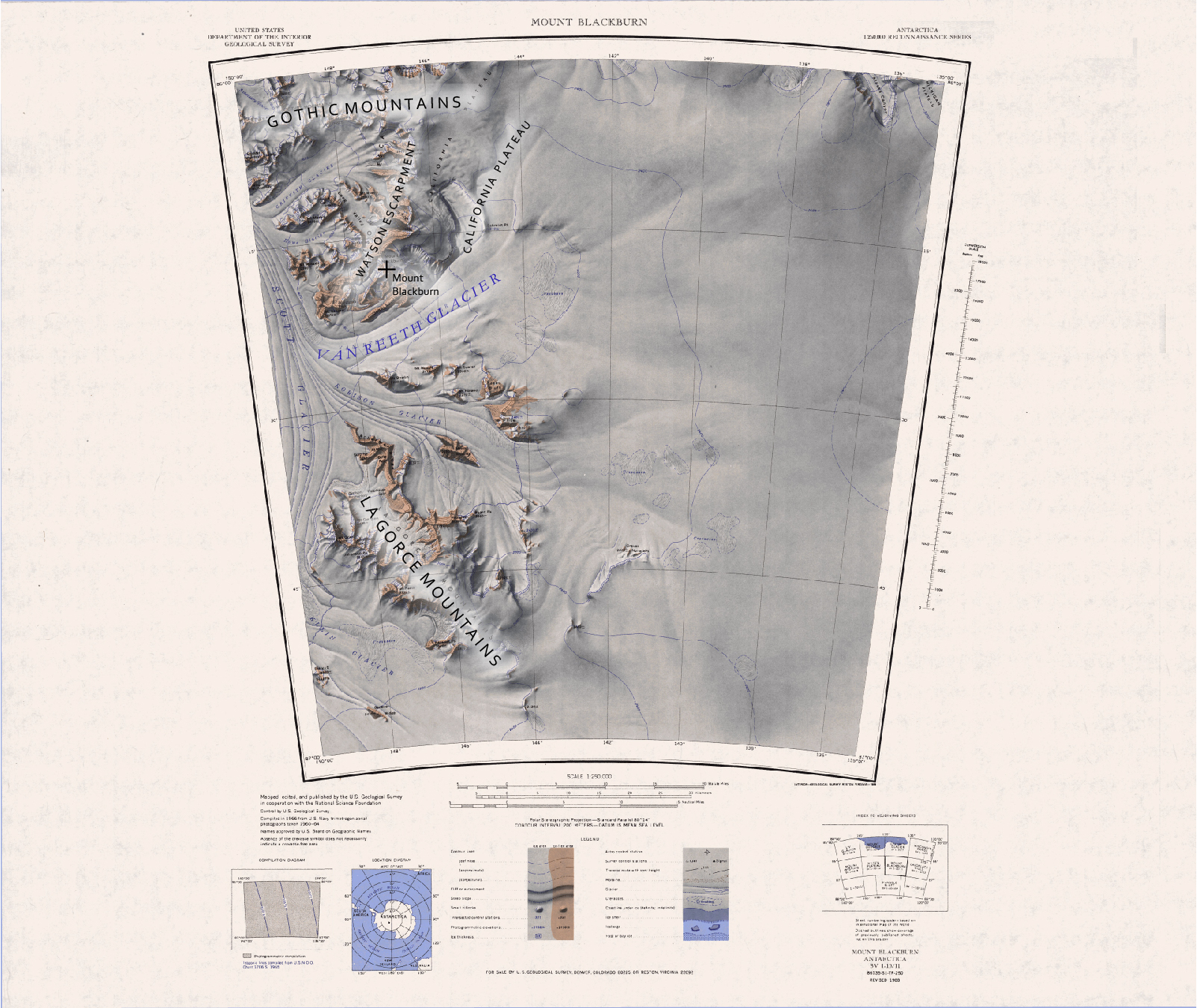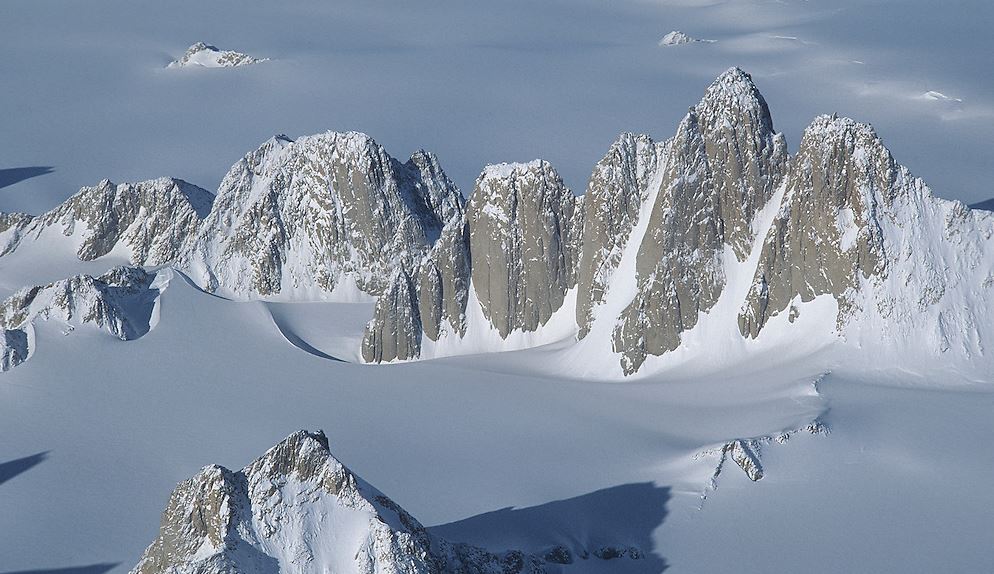Gothic Mountains
The Gothic Mountains (86°00′S 150°00′W) is a group of mountains, 32 kilometers (20 mi) long, in the Queen Maud Mountains of Westarctica, located west of Watson Escarpment and bounded by Scott Glacier, Albanus Glacier, and Griffith Glacier.
Discovery and name
The mountains were first visited in December 1934 by the Byrd Antarctic Expedition geological party led by Quin Blackburn. The name was proposed by Edmund Stump, leader of a U.S. Antarctic Research Program (USARP) - Arizona State University geological party which made investigations here in the 1980-81 season. The mountains are composed of granites which have weathered to produce a series of spires and peaks reminiscent of a Gothic cathedral.
Peerage title
On 28 April 2020, Logan Mullins was granted the hereditary peerage title Duke of the Gothic Mountains in recognition of his support of Westarctica. In September 2020, he was appointed to the post of Director of Discord, responsible for administering Westarctica's Discord server. In this capacity, he served as part of the Ministry of Communications.
Key mountains

- Altar Peak (86°4′S 150°23′W) is a peak (1,780 m) located 1 nautical mile (1.9 km) east-southeast of Mount Harkness. The feature was first visited in December 1934 by the Byrd Antarctic Expedition geological party under Quin Blackburn. The descriptive name was suggested by Edmund Stump, leader of a United States Antarctic Research Program (USARP)-Arizona State University geological party which studied this peak, 1987-88.
- Grizzly Peak (86°00′S 150°00′W) is a peak rising to 2,200 m on the southwest flank of Mount Zanuck. The feature was visited in December 1934 by the Byrd Antarctic Expedition geological party and was included in "Darryl Zanuck Mountain." The granite of this peak is highly jointed and fairly bristles with small spires, suggestive of the coat of a grizzly bear.
- Mount Zanuck (85°58′S 151°10′W) is a mountain about 8 kilometres (5 mi) long surmounted by three sharp peaks in an east-west line, the highest of which rises to 2,525 metres (8,284 ft). The feature stands at the south side of Albanus Glacier at the point where the latter joins Scott Glacier. Discovered by Byrd on the Byrd Antarctic Expedition flight to the South Pole in November 1929. The mountain was visited in December 1934 by the Byrd Antarctic Expedition geological party under Quin Blackburn. Named by Byrd for Darryl F. Zanuck, official of Twentieth Century-Fox Pictures, who assisted the Byrd Antarctic Expedition, 1933–35, in assembling motion-picture records, and later supplied the United States Antarctic Service (USAS), 1939–41, with motion-picture projectors.
- Zanuck East Peak (85°57′S 150°53′W) is the easternmost of the three high peaks that rise from Mount Zanuck massif. The peak was discovered and mapped by the geological party of the Byrd Antarctic Expedition, 1933–35, led by Quin Blackburn. The name was applied in association with Mount Zanuck by members of New Zealand Geological Survey Antarctic Expedition (NZGSAE) who climbed the peak in the 1969-70 season.
Protection by the government
- Main article: Gothic National Monument
On 20 April 2025, Grand Duke Travis declared the Gothic Mountains a national monument under the oversight of the Westarctican Parks Service. It was protected in the first group of sites named by the government.
The Gothic Mountains were on the January 2024 list of ten sites that should be considered for eventual protection as a national park of Westarctica. While not all of the Gothic Mountains fall within Westarctica's borders, the majority of them do. They are among the more physically and geographically distinct ranges in the nation. As part of the Transantarctic Mountains near the south pole, the Gothic Mountains, and most notably the Organ Pipes are some of the most photographed and thoroughly explored in Westarctica. Owing to these factors, they were recommended to be amongst the first areas protected by Westarctica. This recommendation was as a national monument, as the range has a lesser degree of scientific value when compared to many of Westarctica's other sites. This makes it a prime candidate for eventual redesignation as a national park.
The monument protects the entirety of the Westarctican Gothic range, as well as a portion of the nearby Albanus Glacier, the entirety of the Howe and Griffith glaciers, Long Valley, and Mount Russell.
